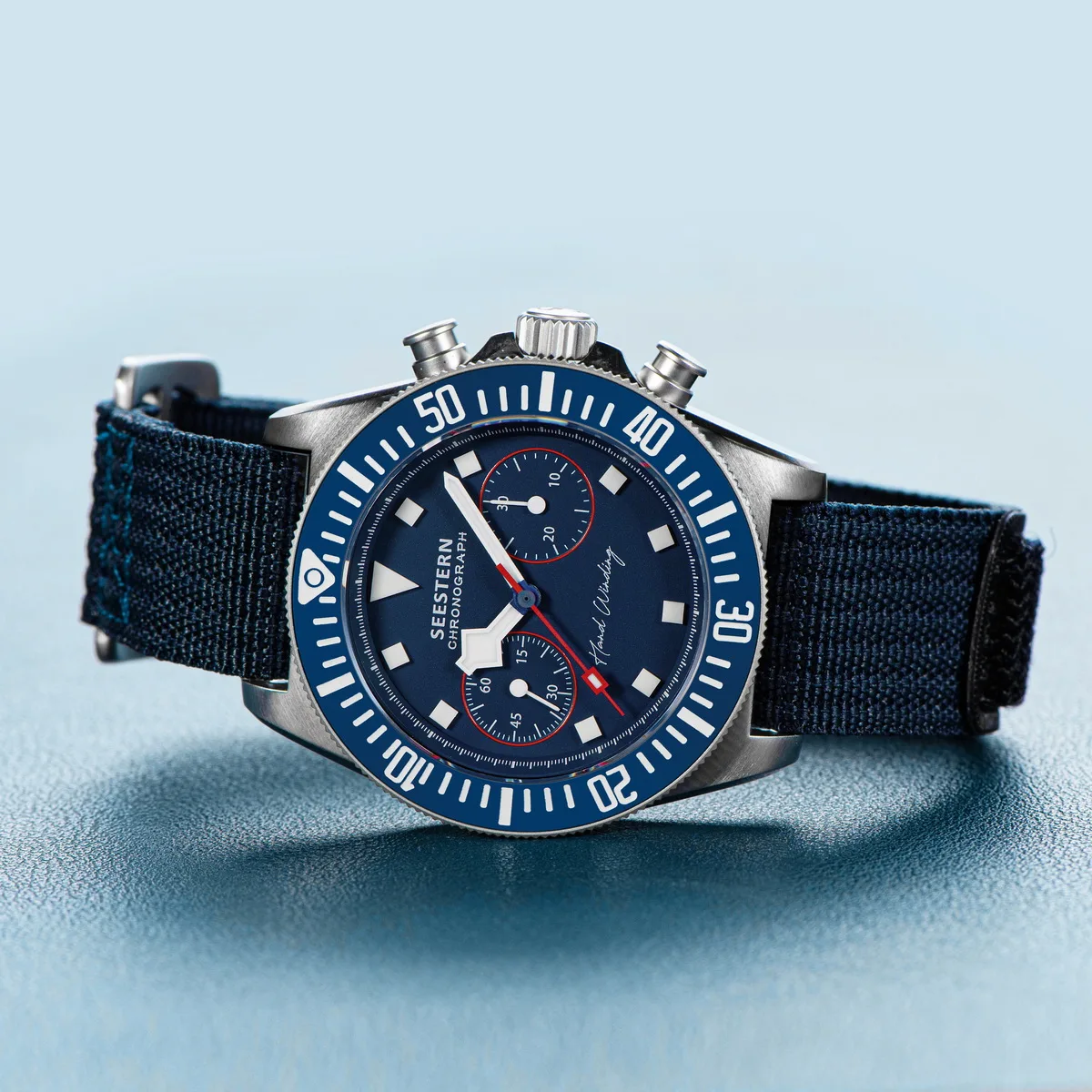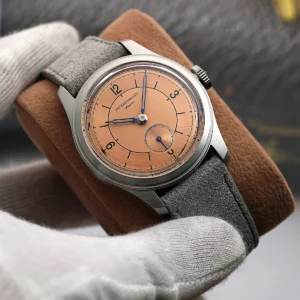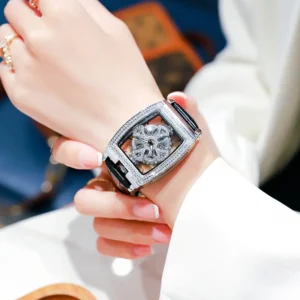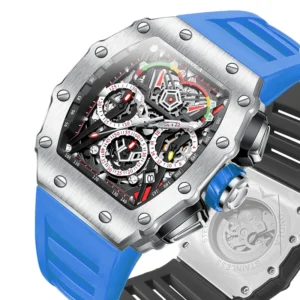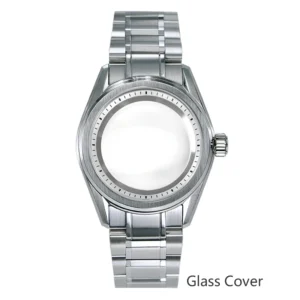Introduction to Chronograph Watches: Where Art Meets Engineering
A chronograph watch represents the perfect marriage between artistry and precision engineering. At its core, a chronograph is a timepiece with integrated stopwatch functionality, allowing wearers to measure elapsed time while still displaying the current time. What makes these watches so fascinating is their remarkable complexity – they’re widely considered among the most challenging horological complications to design and manufacture.
Chronographs exist in a unique space where technical excellence meets aesthetic expression. Within a case just inches in diameter, hundreds of meticulously crafted components work together in perfect harmony. Each part serves both functional and visual purposes, often visible through exhibition case backs that reveal the choreographed dance of gears, levers, and wheels.
The appeal of chronographs transcends their functionality. These mechanical marvels capture moments in time while simultaneously showcasing the pinnacle of human craftsmanship. They represent centuries of innovation compressed into wearable art that adorns the wrist.
In this exploration of chronograph watchmaking, we’ll delve into the mechanisms that make these timepieces tick, the rich history of dive watch engineering that influenced precision timing instruments, and the craftsmanship that elevates chronographs from mere tools to cherished heirlooms.
Chronograph vs. Chronometer: Clearing Up Common Confusion
Before diving deeper into chronograph mechanics, it’s important to address a common source of confusion in watch terminology: the difference between a chronograph and a chronometer.
A chronograph is a watch with an integrated stopwatch function, typically operated by pushers on the side of the case. When activated, it can measure elapsed time independently of the main timekeeping function. Think of it as having a stopwatch built directly into your regular watch.
A chronometer, by contrast, is a high-precision watch that has been tested and certified to meet specific accuracy standards. These watches undergo rigorous testing under various conditions to ensure they maintain accurate time within strict parameters. The certification process examines a watch’s performance in different positions and temperatures over multiple days.
Importantly, these terms are not mutually exclusive. A watch can be both a chronograph and a chronometer if it features stopwatch functionality and has also received accuracy certification. For collectors, this distinction matters significantly as it speaks to both functionality and precision. The longevity of automatic watches often correlates with their precision engineering, which is particularly evident in certified chronometers.
The Mechanical Heart: Core Components of a Chronograph
The foundation of every mechanical chronograph is a sophisticated assembly of components working together to provide both timekeeping and stopwatch functions. Understanding these core components helps appreciate the engineering marvel that is a chronograph watch.
The essential components include:
Pushers: Typically positioned at 2 and 4 o’clock, these buttons control the chronograph functions. The top pusher starts and stops the timing mechanism, while the bottom pusher resets the chronograph hands to zero.
Central chronograph seconds hand: Unlike the regular seconds hand that runs continuously, this hand only moves when the chronograph function is activated. It tracks elapsed seconds with precision.
Subsidiary dials (sub-dials): These smaller dials typically record:
- Minutes (usually up to 30)
- Hours (usually up to 12)
Running seconds (the continuous seconds indication of the watch)
Movement integration: The chronograph mechanism must be integrated with the base movement without interfering with normal timekeeping functions.
What makes these components remarkable is their scale. Many parts measure less than 1 mm, requiring assembly under magnification. Tolerances are often measured in microns (thousandths of a millimeter), demanding extraordinary precision in manufacturing and assembly.
The chronograph mechanism must also be engineered to operate smoothly without excessive energy drain on the main movement. This delicate balance represents one of the greatest challenges in watchmaking. The inner workings of chronograph watches demonstrate how these components function as a synchronized system, with each part playing a crucial role in the overall operation.
Coupling Systems: How Chronographs Engage and Disengage
At the heart of every chronograph is a coupling system – the mechanism that connects and disconnects the stopwatch function from the main timekeeping train. There are two primary approaches to this critical function: horizontal clutches and vertical clutches.
| Feature | Horizontal Clutch | Vertical Clutch |
|---|---|---|
| Engagement | Gear teeth meshing | Friction plates |
| Visual appeal | High (often visible) | Lower (usually concealed) |
| Start precision | Potential “jump” | Smooth start |
| Wear over time | Higher | Lower |
| Manufacturing | Traditional | More modern |
| Common in | Classical designs | Contemporary designs |
The horizontal clutch (also called lateral clutch) represents the traditional approach. When activated, a gear wheel slides horizontally to mesh with the chronograph wheel. This design offers excellent visibility of the mechanism in action, making it popular among watch enthusiasts who appreciate being able to see the engagement process. However, it can sometimes cause the chronograph hand to jump slightly upon activation, as the teeth find their position.
The vertical clutch uses stacked friction plates that press together when the chronograph is activated. This system offers superior precision with virtually no jump when starting the chronograph. It also reduces wear over time since there are no teeth that could potentially skip or become damaged. However, this system is generally more complex to manufacture and often less visible to the observer.
Both systems have their merits, and many automatic chronograph watches showcase these different coupling approaches. The choice between them often reflects a manufacturer’s philosophy regarding tradition, performance, and visual appeal.
Command Systems: The Brains Behind Chronograph Operation
The command system of a chronograph controls how the pushers interact with the movement to start, stop, and reset the timing functions. Two primary architectures dominate this crucial aspect of chronograph design: column wheel systems and cam-actuated systems.
The column wheel system is often considered the more prestigious and traditional approach. As its name suggests, this system features a central wheel with columns (or pillars) evenly spaced around its circumference. When a pusher is pressed, the column wheel rotates precisely, allowing levers to fall between the columns or be pushed up by them. This controls the engagement of various chronograph functions with remarkable precision.
Column wheel systems provide a distinctly smooth and precise pusher feel – there’s a satisfying, crisp click that enthusiasts treasure. However, this precision comes at a cost, as column wheels require more complex manufacturing and careful adjustment.
The cam-actuated system (sometimes called lever or shuttle cam system) represents a more economical approach. Instead of a column wheel, this system uses heart-shaped cams and levers to control the chronograph functions. While it might not offer the same smooth pusher action, a well-executed cam system can be very reliable and durable.
The difference between these systems is most apparent in the tactile experience of operating the chronograph. Column wheel systems typically offer smoother operation with more consistent resistance, while cam systems might feel slightly less refined but perfectly functional.
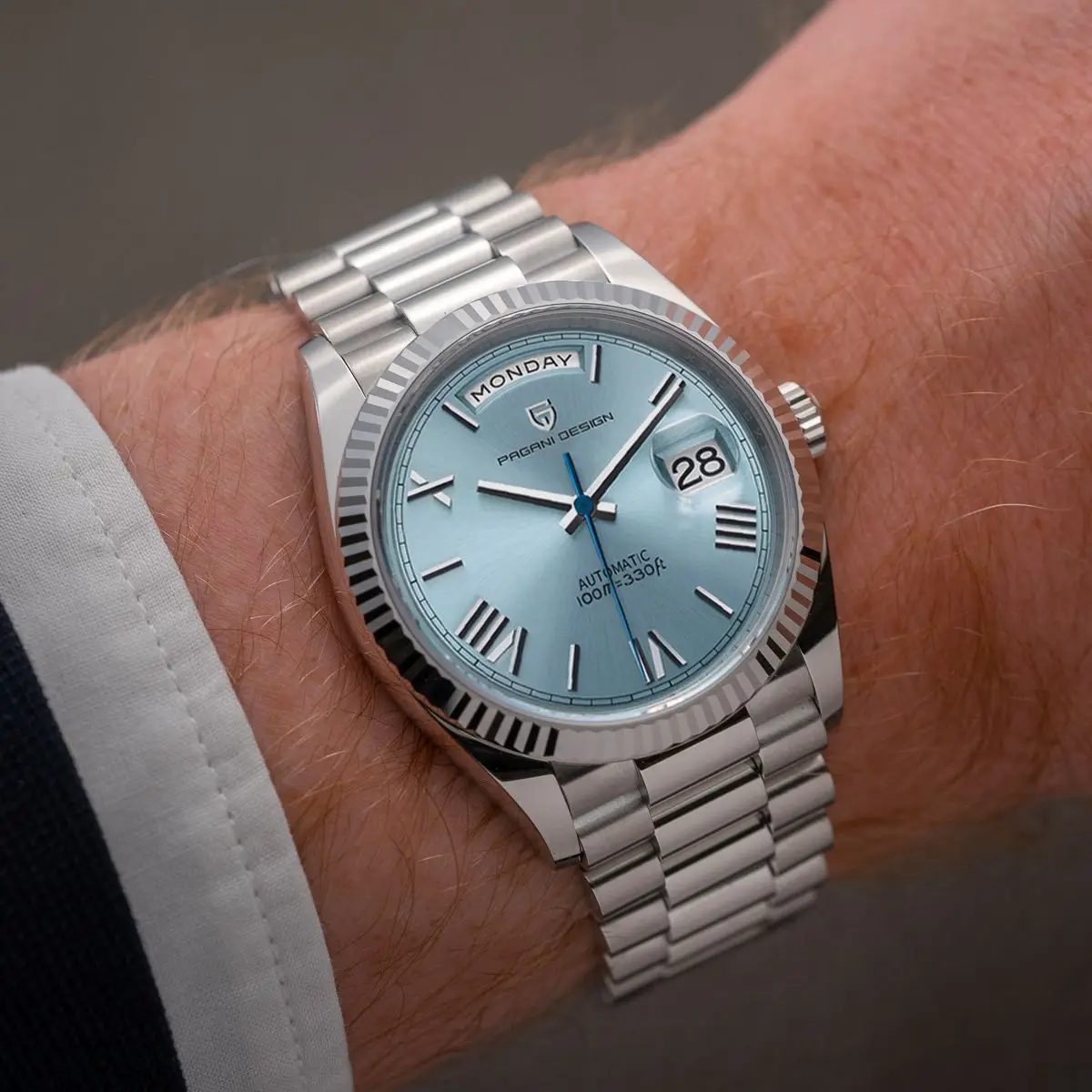
Many chronograph pilot watches showcase these different command systems, with some manufacturers highlighting their command system choice as a selling point for discerning collectors.
The Reset Mechanism: Returning to Zero with Precision
Perhaps one of the most elegant engineering solutions in watchmaking is the chronograph’s reset mechanism. This system must return all chronograph hands precisely to zero, regardless of their position when the reset is activated.
At the center of this mechanism is the heart-shaped cam (also called a heart piece or return-to-zero cam). This ingeniously shaped component works based on mathematical principles – its special heart shape ensures that a lever pressed against it will always slide to the same position at the lowest point of the heart.
Each chronograph hand is connected to its own heart-shaped cam. When the reset pusher is activated, small hammers fall onto these cams, forcing them to rotate until the hammers rest at the lowest point – which corresponds exactly to the zero position for each hand.
The precision required for this mechanism is extraordinary. If the heart cam is even slightly misshapen or if the hammer tension isn’t perfectly calibrated, the hands won’t return precisely to zero. This is why watchmakers consider a crisp, accurate reset action to be one of the hallmarks of a quality chronograph.
The understanding of chronograph characteristics requires appreciation of these reset mechanisms, as they represent one of the most visible quality indicators to the wearer. When a chronograph hand snaps back instantly and lands precisely at zero, it demonstrates the watchmaker’s skill in executing this complex mechanism.
Specialized Chronograph Complications: Beyond the Basics
While standard chronographs are impressive enough, watchmakers have developed several specialized variations that add even more functionality and complexity. These advanced chronograph complications represent the heights of horological achievement.
Monopusher Chronographs feature just a single button that controls all chronograph functions. Pressing the pusher cycles through start, stop, and reset functions sequentially. This design, which predates the two-pusher system, offers elegant simplicity but less operational flexibility. The mechanism must “remember” which function comes next, adding an extra layer of complexity to the movement.
Flyback Chronographs allow the user to reset and restart timing with a single push, without having to stop the chronograph first. Originally developed for pilots who needed to time consecutive intervals quickly, this function requires an intricate mechanism that can disengage, reset, and re-engage the chronograph train nearly instantaneously.
Split-Seconds Chronographs (or rattrapante) feature two superimposed chronograph seconds hands. While timing an event, the user can press a special pusher to halt one hand while the other continues running – perfect for timing intermediate events or comparing two competitors. When the pusher is released, the halted hand “catches up” to the running hand. This requires essentially two chronograph mechanisms working in concert.
Triple Chronographs extend the split-seconds concept further by allowing multiple timing events simultaneously. These represent the pinnacle of chronograph complexity, sometimes incorporating hundreds of additional components beyond a standard chronograph.
Each specialized complication significantly increases the parts count and assembly complexity. A basic chronograph might contain 50-100 more parts than a time-only watch, while a split-seconds can add another 100+ components.
For those interested in horological masterpieces that push mechanical boundaries, unique automatic watches often incorporate these specialized chronograph complications as demonstrations of watchmaking virtuosity.
Manufacturing Challenges: Why Chronographs Represent Horological Excellence
Creating a chronograph movement presents watchmakers with several formidable challenges that explain why these timepieces are held in such high regard within horological circles.
The first major challenge involves component interaction and tolerance management. A chronograph might contain 250-350+ total parts (compared to 130-150 for a time-only watch), all of which must work together flawlessly. Each component must be manufactured to tolerances measured in microns, and the accumulation of even minor variances can result in chronograph malfunction.
Energy distribution presents another significant hurdle. The chronograph mechanism draws additional power from the mainspring when activated. This sudden power demand must be carefully managed to maintain accurate timekeeping in both chronograph and normal operating modes. Engineers must ensure sufficient power reserve while balancing energy consumption between functions.
Precision adjustment requirements further complicate production. Each lever, cam, and spring must be perfectly calibrated to ensure smooth operation, consistent pusher feel, and precise hand movement. This adjustment process requires skilled watchmakers using specialized tools and techniques developed over centuries.
Perhaps most challenging is achieving a balance between reliability, complexity, and serviceability. A chronograph must maintain accuracy over thousands of cycles while remaining serviceable by watchmakers. This requires thoughtful design that considers not only initial assembly but future maintenance.
These manufacturing challenges directly translate to the prestige and cost of chronographs. The expertise required to design and produce them, combined with the extensive quality control needed, explains why chronographs typically command premium prices over simpler timepieces.
The enduring legacy of chronograph complications stems from the watchmaking industry’s ongoing commitment to overcoming these technical challenges with increasingly sophisticated solutions.
Iconic Movements: Benchmarks in Chronograph Engineering
Throughout horological history, certain chronograph movements have established themselves as benchmarks against which others are measured. These iconic calibers represent watershed moments in chronograph development, introducing innovations that continue to influence modern designs.
Classic manual-wind architectures established the foundation of chronograph design. These movements feature traditional column wheel activation, horizontal clutches, and meticulous hand finishing. Their relatively slim profiles allowed for elegant case designs, while their architecture emphasized visual beauty alongside technical function. Many enthusiasts appreciate the ritual of winding these movements daily, creating a connection with the timepiece.
Revolutionary automatic chronograph designs marked a significant advance by adding self-winding capability to chronograph functionality. These movements tackled the challenge of fitting an oscillating weight, chronograph works, and automatic winding mechanism into a reasonably sized package. The technical solution typically involved modular construction or integrated designs with specially shaped rotors to maintain reasonable case dimensions.
Contemporary innovations focus on improving chronograph performance through materials science and manufacturing precision. Modern movements often feature silicon components, higher frequency balances for more precise timing, and extended power reserves. Some contemporary designs have revisited vertical clutch systems with innovative improvements or incorporated advanced column wheel designs manufactured through modern techniques.
What makes these movements architecturally significant extends beyond their technical specifications. The thoughtful arrangement of components, efficient use of space, and elegant solutions to mechanical problems represent the epitome of engineering artistry. These qualities are beautifully displayed in timepieces like the mechanical chronograph with sapphire crystal, which exemplifies classic chronograph movement architecture.
The Enduring Appeal: Why Enthusiasts Value Mechanical Chronographs
Despite the prevalence of digital timing devices offering superior accuracy, mechanical chronographs continue to captivate enthusiasts worldwide. This enduring appeal stems from a unique combination of factors that transcend mere timekeeping.
The heritage embodied in a mechanical chronograph represents centuries of continuous innovation. Each watch carries forward design elements and technical solutions refined over generations. When activating a chronograph pusher, the wearer participates in a tradition dating back to the early days of precision timekeeping, creating a tangible connection to horological history.
The tactile experience of operating a mechanical chronograph provides satisfaction that digital alternatives simply cannot match. The resistance of a well-crafted pusher, the crisp click of activation, and the smooth sweep of the chronograph hand create a sensory experience that watch enthusiasts cherish. This physical interaction creates an intimate connection between the wearer and the timepiece.
Perhaps most significantly, mechanical chronographs represent a remarkable achievement in miniaturized mechanical engineering. In an era dominated by disposable electronics, a finely crafted chronograph stands as a testament to the enduring value of mechanical excellence. The fact that these intricate mechanisms can maintain precise timing while withstanding the rigors of daily wear makes them all the more impressive.
Chronograph watches remain timelessly appealing not just for their functionality, but as wearable expressions of craftsmanship that bridge art and engineering. Their enduring presence on the wrists of enthusiasts speaks to our human appreciation for objects that combine beauty, function, and heritage.
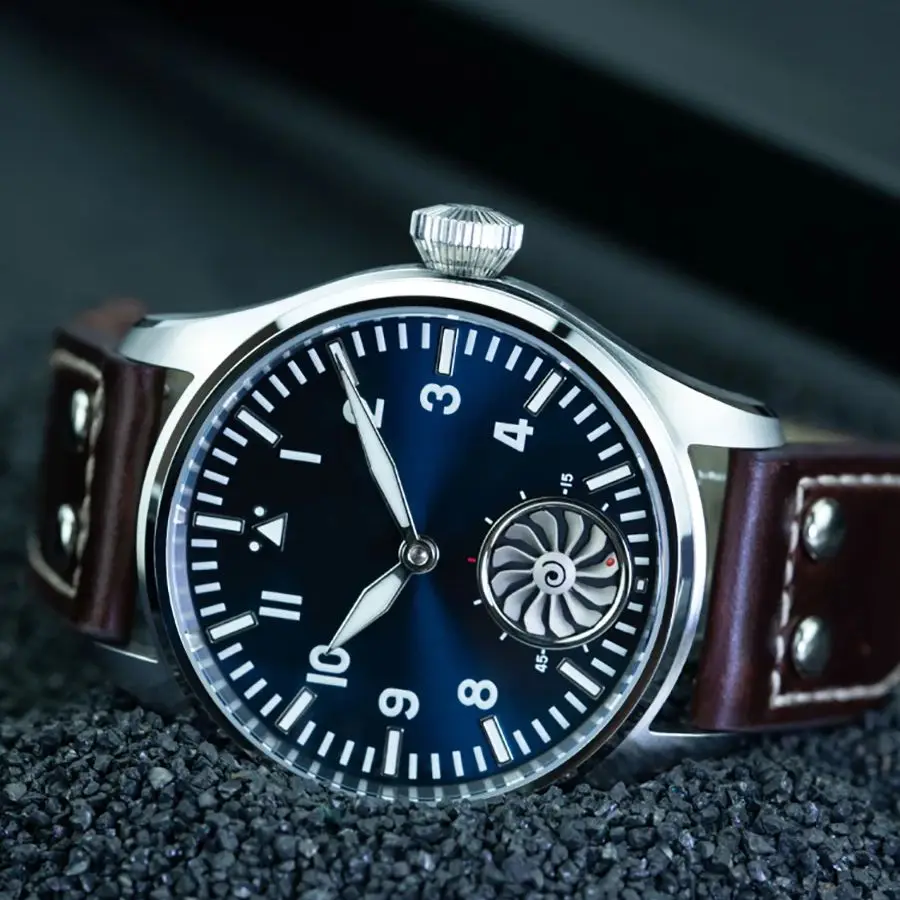
Appreciating Chronograph Finishing: The Visible Artistry
Beyond the technical functionality, fine chronographs showcase exceptional finishing techniques that elevate them from precision instruments to works of art. These finishing methods serve both aesthetic and practical purposes, enhancing the beauty of the movement while often improving its performance and longevity.
Anglage (beveling) involves creating polished, angled edges on components. Skilled artisans carefully bevel the edges of bridges, plates, and levers to create catching edges that reflect light. This labor-intensive process not only beautifies the movement but also removes sharp edges that might cause wear over time.
Côtes de Genève (Geneva stripes) are decorative wave patterns applied to movement plates and bridges. Created by a specialized tool that makes small, consistent scratches across surfaces, this finishing technique reduces light reflection and helps prevent dust accumulation while creating a distinctive visual signature.
Perlage (circular graining) consists of overlapping circular patterns resembling tiny pearls. Applied to plates and other flat surfaces, perlage creates a textured surface that helps retain lubricating oils where needed and adds visual interest to otherwise plain components.
Black polishing (mirror finish) represents perhaps the most challenging finishing technique. Components are polished to such a perfect degree that they appear black from certain angles and perfectly reflective from others. This technique requires extraordinary patience and skill, typically reserved for the most visible and important components.
These finishing elements aren’t merely decorative – they represent the watchmaker’s commitment to excellence throughout the timepiece, even in areas rarely seen. In high-end chronographs, this attention to detail extends to components visible only during servicing, reflecting a holistic approach to quality craftsmanship.
Manual wind watches often showcase these finishing techniques particularly well, as their movements typically allow more space for artisanal touches compared to automatic mechanisms.
Automatic Chronograph Watches, Chronograph Pilot Watches
Price range: $233.36 through $237.58 Select options This product has multiple variants. The options may be chosen on the product pageAutomatic Chronograph Watches, Classic Style Dive Watches
$3,053.06 Select options This product has multiple variants. The options may be chosen on the product pageClassic Manual Wind Watches, Manual Wind Dress Watches
Price range: $425.50 through $462.50 Select options This product has multiple variants. The options may be chosen on the product page- $104.12 Select options This product has multiple variants. The options may be chosen on the product page
Rugged Automatic Watches, Unique Automatic Watches
Price range: $228.96 through $231.10 Select options This product has multiple variants. The options may be chosen on the product pageGMT Automatic Watches, Unique Automatic Watches
$420.10 Select options This product has multiple variants. The options may be chosen on the product page
Is a Chronograph More Difficult to Service Than a Standard Watch?
Yes, chronographs are significantly more challenging to service than standard timepieces, though the degree of difficulty varies depending on the specific movement design.
The primary service challenge stems from component complexity. While a time-only watch might contain 130-150 parts, chronographs often feature 250-350+ components. This increased part count means more potential points for wear, more components to clean, inspect, and lubricate, and a more intricate reassembly process.
The interactions between chronograph components present another service hurdle. Unlike time-only movements where components generally maintain fixed positions relative to each other, chronograph mechanisms feature levers, cams, and wheels that must move smoothly against one another. Proper adjustment of these interaction points is critical for reliable operation.
Lubrication requirements for chronographs are also more demanding. Different parts of the chronograph train require specific lubricants based on their function and contact pressure. Applying too much or too little lubrication, or using the wrong type in a specific location, can lead to premature wear or operational failure.
Reset mechanism precision adjustment represents another specialized service challenge. Ensuring all hands return precisely to zero requires careful calibration of multiple components, often necessitating several rounds of adjustment and testing.
For these reasons, chronograph service typically takes 1.5-2 times longer than servicing a time-only watch and generally commands higher service costs. Many general watchmakers refer chronographs to specialists who have the tools, expertise, and experience to properly maintain these complex mechanisms.
Understanding the differences between manual versus automatic chronographs helps owners appreciate the specific service requirements of their timepieces and the expertise required to maintain them properly.
What Should You Look For When Evaluating a Chronograph’s Quality?
When assessing the quality of a mechanical chronograph, several key indicators can help even non-experts make informed evaluations:
Pusher action: Quality chronographs offer consistent resistance throughout the pusher travel. The activation should feel crisp and definitive, not mushy or uncertain. When released, the pusher should return promptly to its resting position.
Hand alignment: When reset to zero, all chronograph hands should point precisely to their respective zero markers. Misalignment often indicates poor adjustment or component wear.
Chronograph hand motion: Upon activation, the chronograph seconds hand should start immediately without stutter or hesitation. Its motion should be smooth and consistent, without any visible jumps between seconds (except in certain movements designed with jumping seconds).
Reset action: The hands should return to zero promptly and precisely when the reset pusher is activated, without bouncing or requiring multiple attempts.
Power reserve stability: A well-designed chronograph maintains consistent timekeeping accuracy regardless of whether the chronograph function is running or stopped. Significant timekeeping variation when the chronograph is activated suggests inadequate power management.
Subdial functionality: Each subsidiary dial should function properly and remain synchronized with the main chronograph seconds hand. In particular, the minute counter should advance precisely as the seconds hand completes each revolution.
These quality indicators directly relate to the underlying mechanisms discussed earlier. For instance, the smooth chronograph activation correlates with well-designed coupling systems, while precise reset action reflects a properly calibrated heart-cam reset mechanism.
By understanding these indicators, enthusiasts can make more informed decisions when selecting timepieces and better appreciate the craftsmanship of multi-register chronograph watches in their collection.
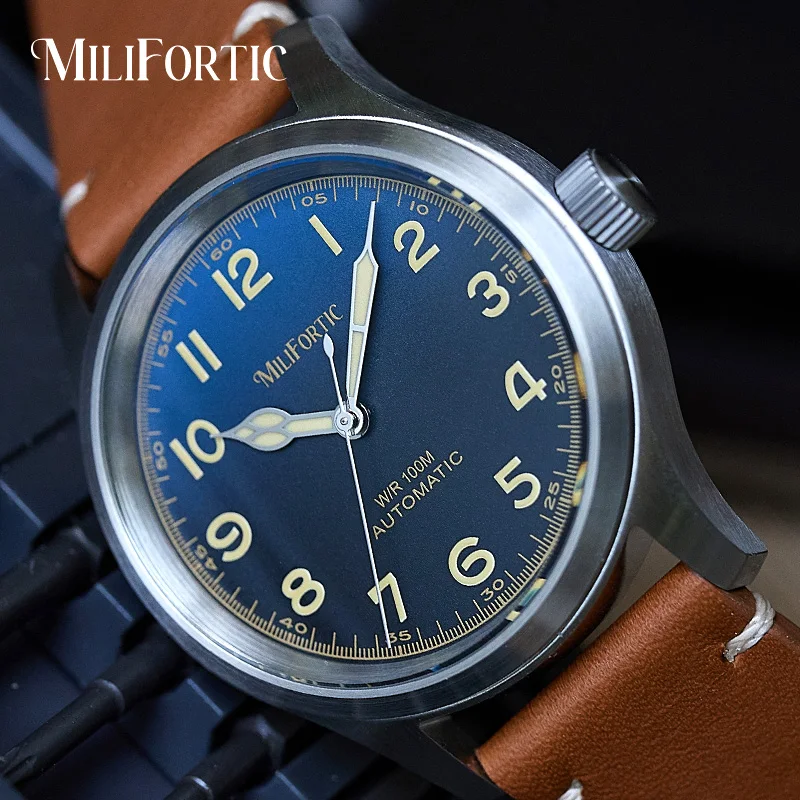
Can a Chronograph Movement Be Modified or Customized?
Chronograph movements do offer possibilities for modification, though within certain constraints imposed by their complex architecture. The degree of customization possible depends largely on the movement’s design and the modifier’s technical capabilities.
Decorative modifications represent the most accessible customization option. Movement finishing techniques can be applied or enhanced, including custom engraving on bridges, specialized plating or coating treatments, and personalized rotor designs in automatic chronographs. These aesthetic changes don’t affect functionality but can create a distinctive visual identity.
Functional modifications require more technical expertise but are possible with certain movement architectures. Dial arrangements can sometimes be reconfigured, converting bicompax (two-subdial) layouts to tricompax (three-subdial) or vice versa, depending on the base movement. Some modifiers can also alter gear ratios to change how long a chronograph can record time – for example, extending a 30-minute counter to a 60-minute counter.
However, fundamental architectural elements typically cannot be altered without essentially creating a new movement. Converting between column wheel and cam-actuated systems or between vertical and horizontal clutches generally isn’t feasible as a modification.
The critical consideration for any chronograph modification is maintaining mechanical integrity. The delicate balance of component interactions means even small changes can have significant effects on reliability, accuracy, and service requirements.
The tradition of movement finishing represents perhaps the most historically significant form of chronograph personalization. For centuries, watchmakers have expressed their artistic vision through finishing techniques that enhance both beauty and functionality, creating unique timepieces like the vintage pilot manual wind watch that showcase exceptional craftsmanship.
At Sharp Aspect, we appreciate the perfect marriage of technical excellence and visual appeal that chronographs represent. These remarkable timepieces exemplify the enduring human fascination with mechanical ingenuity and precision craftsmanship.

